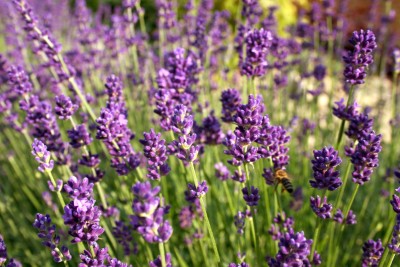English Lavender

Common Names: English Lavender, Common Lavender, True Lavender, Narrow-leaved Lavender, Lavandula angustifolia, Lavandula officinalis, Lavender, Lavanda, Spikenard, French Lavender (in broader sense), International: Lavandula
Latin Name: Lavandula angustifolia
Origin: Europe
Short Introduction
English Lavender thrives best in sunny environments with well-drained soil. This wonderfully aromatic flower can be grown from seed by pre-sprouting on moist cotton wool. However, a more reliable method is propagation by cuttings—simply allow lavender cuttings to develop roots in a glass of water before planting them in soil. For lush, abundant blooms, prune lavender regularly, ideally from May to September. While lavender is considered frost-hardy, it is best protected in winter with a covering of spruce branches.
Detailed Description
A soothing balm for frazzled nerves!
Botanical Information
English Lavender is a semi-shrub that grows to about half a meter in height. Its woody stem bears entire, sessile, and greyish-felted leaves. If you turn a leaf over, you'll see tiny dark dots—these are essential oil glands, responsible for the captivating and calming fragrance of this plant. The stems end in small, lipped purple flowers arranged in spikes. The fruit of lavender consists of tiny nutlets.
Origin and Distribution
English Lavender (Lavandula angustifolia) originates from the Mediterranean region, where it prefers dry and warm climates.
Usage / Dosage
Lavender is especially known for its calming effects on the body. It helps lower blood pressure, induces mental well-being, and promotes better sleep. It also stimulates digestion by relaxing spasms in the intestinal muscles, thereby increasing peristalsis and digestive enzyme secretion. Lavender is often blended with other herbs to enhance its effects, particularly in inhalation mixtures that soothe the airways during colds and moist or dry coughs. Lavender calms irritated mucous membranes and, by moisturizing them, assists in expectoration. Apart from respiratory care, lavender is an essential toolkit for your home pharmacy in cases of injuries, dislocations, or muscle strains. Lavender oil is used for nervous weakness, hysteria, and migraines.
The restorative effect of lavender tea is also notable for asthma and stomach colic. For external use, lavender baths are excellent—they help wounds heal more quickly due to antibacterial properties.
Active Compounds
Lavender owes its beautiful fragrance and antibacterial effects to its essential oil, which contains several compounds, including geraniol, also found in roses. Lavender also contains tannins, pigments, and bitters. Of the plant parts, the flower yields the highest essential oil content, while the stem contains more tannins.
Traditional Dosage
For immediate relief in stressful situations, lavender oil is applied to the temples and massaged in circular motions. As a sedative, pure lavender essential oil may be taken internally in doses of 2 to 10 drops, followed by plenty of fluids. For skin irritations or rheumatic complaints, a bath in a lukewarm infusion of lavender aerial parts is recommended—use 5 tablespoons of herb per 1 liter of boiling water, steeped for half an hour. To prepare lavender tea: steep 2 teaspoons in 250ml of hot water for 15 minutes, strain, and sip throughout the day.
Lavender Oil:
Fill a clean jar to the top with dry lavender flowers and cover with oil (such as almond oil). Leave in a warm place for one week, shaking occasionally. After a week, strain the oil, refill the jar with new dry flowers, and pour the used oil over them. Repeat this process 2–3 times at similar intervals. Use the finished oil as described above.
